- Skiare Ski Tours Pty Ltd PO Box 4478 GUMDALE QLD 4154 AUSTRALIA
The fascinating thing about the area of Alta Badia and the skiing is that it is not a purpose built ski resort. It doesn’t become a ghost town after the snow has melted and the skiers have all gone home. Instead it is valuable and productive farm land first and then a ski resort second. This means that many of the traditional farming activities and day to day village life takes place all year round. It is not unusual to ski down a slope and pass a barn full of cows about to be milked or see a farmer loading hay onto an old fashion farming sled.
Many of the local farming community of Alta Badia double as both farmers and then lift operators, groomers, ski instructors or restaurateurs. That means that whilst you are out skiing and enjoying yourself, in one way or another you will cross paths with the people that truly belong here and have the Dolomites embedded in their hearts.
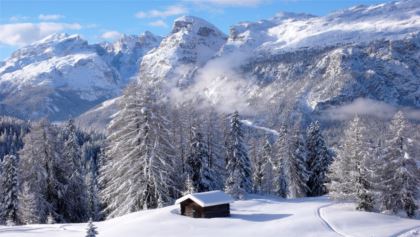
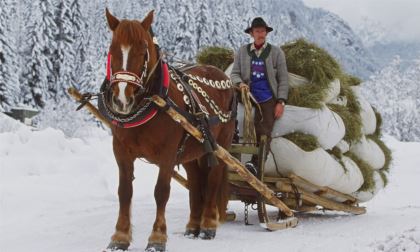



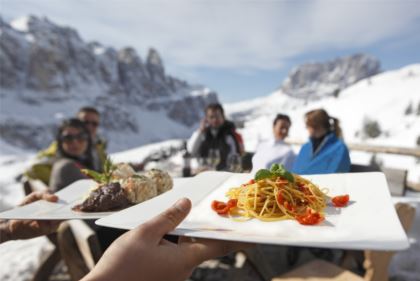


Shopping in Alta Badia is not only a pastime; it is also a means of getting to know the Ladin culture. The many specialist food shops are well stocked with typical and genuine products from the region, including speck, salami, cheese, jam, and fruits of the forest grappa’s. The artistic handicraft shops are also worth a visit. In them you will find typical handmade cloths and sculptures. The sportswear shops, which are an old tradition, offer a complete range of high quality products and, more importantly, advice and assistance from qualified staff.
The 5 villages of the Alta Badia ski region are Colfosco, Corvara, La Villa, San Cassiano and Badia. The town of Badia (formerly called Pedraces) is the lowest lying village at 1,324m with the highest groomed slope in the Alta Badia mountain range being at the top of the Vallon ski run at 2,400m. Within the ski area of Alta Badia alone, there is 130km’s of groomed ski runs.
Alta Badia is part of the Dolomiti Superski pass which gives you access to all of the neighbouring valleys which are linked either by ski or short transfer rides. This makes the Dolomites the largest ski area in the world on one pass.
If great food is a vital ingredient of your skiing trips then the Dolomites and especially Alta Badia is your pick which has established itself as a gastronomic hotspot. Now, chefs at the Michelin-starred restaurants have created a new form of ‘haute cuisine’, dishes to be served in mountain huts. If the prospect of a good meal after a morning’s skiing is one of your main criteria, then you will appreciate this Alpine pocket of gourmet heaven.
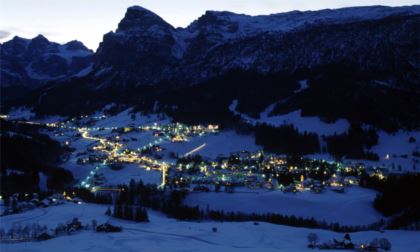
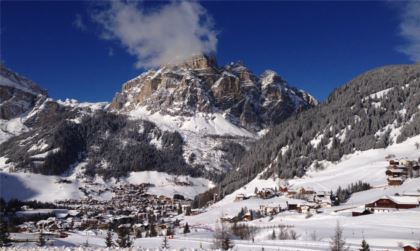
Located in a wide, sunny basin at the foot of the Sassongher Mountain and at 1570m above sea level, Corvara could reasonably be defined as the heart of tourism in Alta Badia. Already by the second half of the 18th century locals began to climb the surrounding mountains and lead the first tourists at that time know as foreigners. With the inauguration of the first ski school after the First World War and the construction of the Col Alto cableway in 1938 (substituted by the first chair lift in Italy in 1947) the green light was given to winter tourism. Establishments offering accommodation and recreation of a very high level and tour operators of a high professionalism have helped to make Corvara one of the most sought after tourist centres in the Alps.
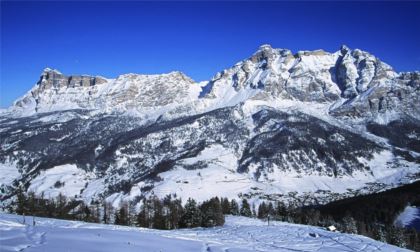
In this little village at the foot of the majestic walls of the Conturines, La Varella, Settsass and the Lagazuoi Mountains the alpine environment has managed to adapt to the demands of the holidaymaker. San Cassiano boasts a long tradition of accommodating tourists with a high number of 4 star hotels. Immersed in the beautiful scenery of the Dolomites, San Cassiano is a much loved tourist centre in both the winter and the summer. Very charming is the area Armentarola in winter it is a paradise for cross-country skiers and in summer a departure point for walks in the middle of the green beauty.
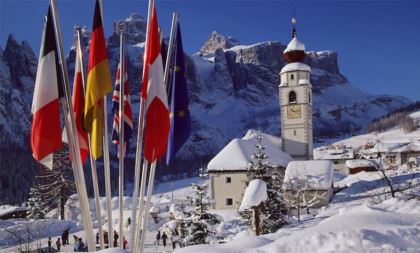
Protected by the imposing Sella massif and the Sassongher Mountain, Colfosco, situated in the extreme south of the Puez dle National Park, is the highest inhabited place in Alta Badia at 1645m. Characteristics of this enchanting village are its picturesque Gothic church, which has become a classic in photos of the Dolomite area. The particular atmosphere of a high alpine village is linked with avant-garde tourist facilities, which makes Colfosco an attractive destination in both summer and winter.
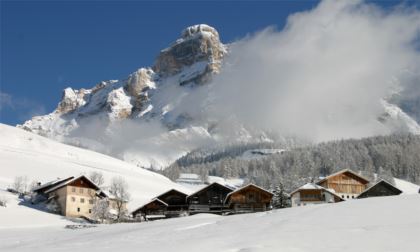
The village is situated at the foot of the Sasso Santa Croce mountain that is tinged with pink when the sun sets. This phenomenon is known as the Enrosadira. The village, which is small and thus very charming and quiet, is the ideal destination for those of you who prefer staying in a family environment with a simple yet appetising cuisine that harks back to yesteryear. Badia is known for its beautiful nature walks and its romantic atmosphere and so is ideal for a winter and a summer holiday. The Photographic Emblem of the village is the Santa Croce chapel, which dates back to the 16th century. Since a few years San Leonardo is also known to be the birthplace of the Saint Giuseppe Freinademetz and his native house at Oies is the destination of many pilgrims.

Protected by the imposing Sella massif and the Sassongher Mountain, Colfosco, situated in the extreme south of the Puez dle National Park, is the highest inhabited place in Alta Badia at 1645m. Characteristics of this enchanting village are its picturesque Gothic church, which has become a classic in photos of the Dolomite area. The particular atmosphere of a high alpine village is linked with avant-garde tourist facilities, which makes Colfosco an attractive destination in both summer and winter.